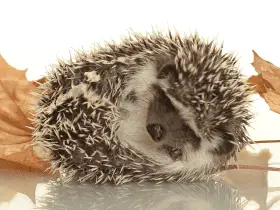Did you know that hedgehogs in New Zealand have a unique lifespan compared to their counterparts elsewhere? With an average lifespan of 4-6 years, these prickly creatures have captured the curiosity of scientists and nature enthusiasts alike.
In this article, we will delve into the factors that affect hedgehog lifespan, their natural habitat, breeding habits, and the secrets behind their longevity and survival in New Zealand.
Get ready to explore the fascinating world of New Zealand’s hedgehogs and gain a deeper understanding of their remarkable lifespan.
Key Takeaways
- Hedgehogs were introduced to New Zealand in the mid-1800s and have thrived in the absence of predators, impacting the native wildlife and disrupting the ecosystem.
- The natural habitat of New Zealand’s hedgehogs includes the forest understory and coastal areas, where they find shelter and food.
- Factors such as proper nutrition, veterinary care, predator-prey relationships, and a safe environment play a role in affecting the lifespan of hedgehogs.
- Hedgehogs mate during spring and summer, with females being able to delay the implantation of fertilized eggs. After a gestation period, the female gives birth to hoglets and provides them with milk and protection until they become independent.
The Arrival of Hedgehogs in New Zealand
You’ll be fascinated by how hedgehogs made their way to New Zealand. The introduction of hedgehogs in New Zealand is a captivating story that sheds light on the impact they’ve had on the native wildlife. Hedgehogs were first introduced to New Zealand in the mid-1800s as a means to control garden pests. However, little did anyone know that this seemingly harmless introduction would have far-reaching consequences for the delicate ecosystem.
These small, spiky creatures quickly adapted to their new environment and thrived in the absence of natural predators. With their voracious appetite, hedgehogs began preying on native insects, birds, and reptiles, disrupting the delicate balance of the ecosystem. Their impact on native wildlife has been significant, with several species facing decline or even extinction due to hedgehog predation.
Studies have shown that hedgehogs can consume a wide range of prey, including native insects, eggs, and small vertebrates. This has led to a decline in the population of ground-nesting birds, such as kiwis, which are particularly vulnerable to hedgehog predation. Furthermore, hedgehogs also compete with native animals for resources, such as food and habitat, further exacerbating the impact on the native wildlife.
Understanding the introduction of hedgehogs in New Zealand and their impact on native wildlife is crucial for conservation efforts. By studying their behavior and implementing effective management strategies, we can work towards minimizing the negative effects and restoring balance to the ecosystem, ensuring the survival of New Zealand’s unique wildlife.
The Natural Habitat of New Zealand’s Hedgehogs
Take a closer look at where New Zealand’s hedgehogs thrive in their natural habitat. These endangered species have a significant ecological impact, and understanding their habitat is crucial for their conservation.
Here is a detailed analysis of the natural habitat of New Zealand’s hedgehogs:
- Forest Understory: Hedgehogs primarily inhabit the forest understory, where they find shelter and protection from predators. The dense vegetation provides them with ample hiding spots and a diverse range of food sources such as insects, earthworms, and small vertebrates.
Emotion Evoked: A sense of awe and appreciation for the intricate ecosystem that supports hedgehog survival.
- Coastal Areas: Hedgehogs have also adapted to thrive in coastal areas, where they can access a variety of food resources like shore insects, sandhoppers, and even bird eggs. The proximity to the ocean provides them with a unique environment that contributes to their survival.
Emotion Evoked: Fascination and curiosity about the hedgehogs’ ability to adapt to different habitats.
Understanding the natural habitat of New Zealand’s hedgehogs is essential for their conservation efforts. By preserving their forest understory and coastal areas, we can ensure the survival of these endangered species and minimize their ecological impact. It’s crucial to protect their habitats to maintain the delicate balance of New Zealand’s ecosystems and preserve the biodiversity of these unique creatures.
Factors Affecting Hedgehog Lifespan
To increase the hedgehog lifespan, you must ensure proper nutrition and regular veterinary care. Hedgehogs have specific dietary requirements that must be met in order for them to thrive and live a long, healthy life. They’re insectivores, primarily feeding on invertebrates such as beetles, worms, and slugs. Providing a balanced diet that mimics their natural food sources is essential. This can be achieved by offering a combination of high-quality commercial hedgehog food, supplemented with live insects and occasional fruits or vegetables.
Regular veterinary care is also crucial in maximizing the lifespan of hedgehogs. Hedgehogs should receive routine check-ups to monitor their overall health and address any potential issues before they become serious. This includes dental care, as dental problems can significantly impact their ability to eat and lead to malnutrition.
Predator-prey relationships can also affect the lifespan of hedgehogs. Hedgehogs are relatively low on the food chain and are preyed upon by larger animals such as foxes and birds of prey. Providing a safe and secure environment, such as a predator-proof enclosure or a well-fenced garden, can help protect hedgehogs from predators and reduce the risk of premature death.
Breeding Habits and Reproduction of Hedgehogs
If you want to understand the breeding habits and reproduction of hedgehogs, it’s important to know that they typically mate during the spring and summer months. Hedgehogs are solitary creatures, but when it comes to mating, they come together for a short period of time.
Here are some key facts about hedgehog breeding:
Hedgehog population control: Hedgehogs have a unique way of controlling their population. The female hedgehog has the ability to delay implantation of the fertilized egg. This means that she can choose when to become pregnant, ensuring that she only reproduces when conditions are favorable. This mechanism helps to prevent overpopulation and ensures that the young have a better chance of survival.
Parental care in hedgehogs: Hedgehogs aren’t known for their parental care, but the female does play a role in raising the young. After a gestation period of around 30 to 40 days, she gives birth to a litter of 3 to 7 hoglets. The mother provides them with milk and protects them from predators. However, after a few weeks, the mother will start to wean the hoglets and they’ll become independent.
Understanding the breeding habits and reproduction of hedgehogs is crucial for conservation efforts and ensuring the well-being of these unique creatures. By studying their population control mechanisms and parental care, we can better serve them and protect their future.
Longevity and Survival of New Zealand’s Hedgehogs
You should know that hedgehogs in New Zealand have a relatively short lifespan compared to their counterparts in other parts of the world. The predation impact plays a significant role in their survival and longevity. New Zealand’s hedgehogs face various threats from introduced predators, such as stoats, cats, and dogs. These predators pose a significant risk to hedgehogs, as they aren’t native to the island and have no natural predators. As a result, hedgehogs in New Zealand have to constantly evade these predators in order to survive.
The population dynamics of hedgehogs in New Zealand are also affected by factors such as food availability and habitat loss. Hedgehogs primarily feed on insects, worms, and other small invertebrates. However, changes in land use and the introduction of invasive species have led to a decline in the availability of their food sources. This, in turn, has a direct impact on their survival and overall population size.
In addition to predation and food availability, the lifespan of hedgehogs in New Zealand is also influenced by disease and human activities. Hedgehogs are susceptible to various diseases, including parasitic infections and respiratory illnesses. Human activities, such as road traffic and habitat destruction, also pose threats to their survival.
Frequently Asked Questions
What Is the Diet of Hedgehogs in New Zealand?
Hedgehogs in New Zealand have a varied diet consisting of insects, worms, slugs, and snails. Their feeding habits impact native species by consuming their food sources and competing for resources.
Are Hedgehogs in New Zealand Considered Pests?
Hedgehogs in New Zealand can be considered pests due to their impact on native wildlife. For example, they prey on ground-nesting birds, leading to population declines. Hedgehog population control is necessary to protect biodiversity.
How Do Hedgehogs in New Zealand Defend Themselves From Predators?
Hedgehogs in New Zealand defend themselves from predators using various defense mechanisms. They have sharp spines that deter attackers, and they can also curl into a ball for protection. However, their natural habitat faces threats from predators and human activities.
Do Hedgehogs in New Zealand Hibernate During the Winter?
Yes, hedgehogs in New Zealand do hibernate during the winter. However, they do not migrate. The mating season for hedgehogs in New Zealand typically occurs in spring or early summer.
Are There Any Conservation Efforts in Place to Protect Hedgehogs in New Zealand?
Conservation efforts in New Zealand focus on protecting hedgehog populations and implementing population control measures. These efforts aim to ensure the survival of hedgehogs while also minimizing their impact on native wildlife and ecosystems.
Conclusion
You now have a unique glimpse into the lifespan of New Zealand’s hedgehogs. These remarkable creatures, like tiny warriors, have established themselves in a foreign land, adapting to their surroundings and facing various challenges.
Through careful analysis of their natural habitat, breeding habits, and factors affecting their lifespan, we’ve gained insight into their longevity and survival.
These resilient hedgehogs, with their tenacity and determination, continue to thrive in the beautiful landscapes of New Zealand.
















Leave a Reply
View Comments